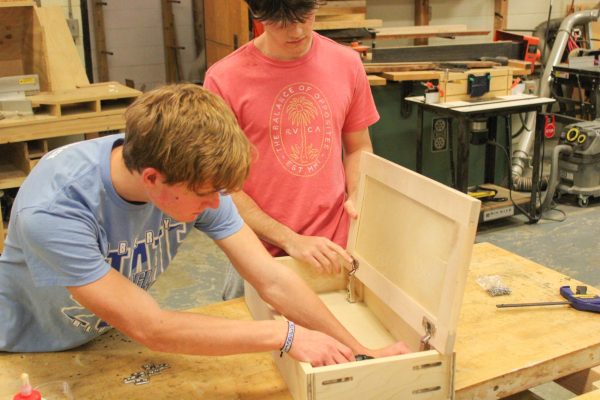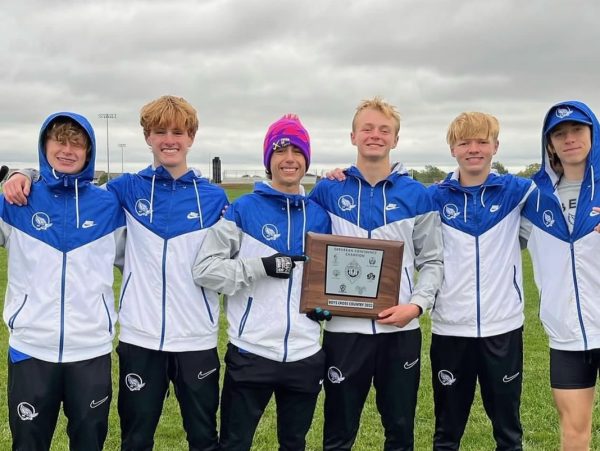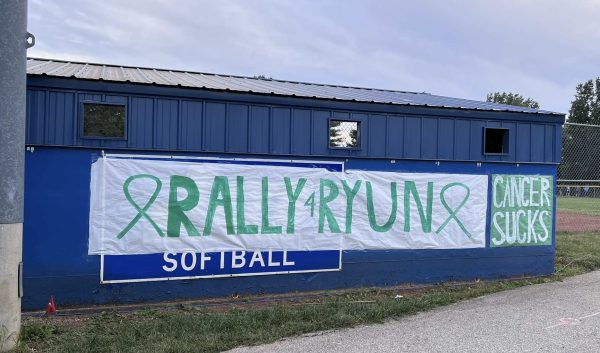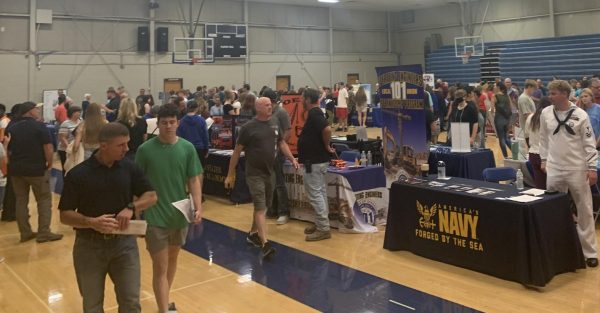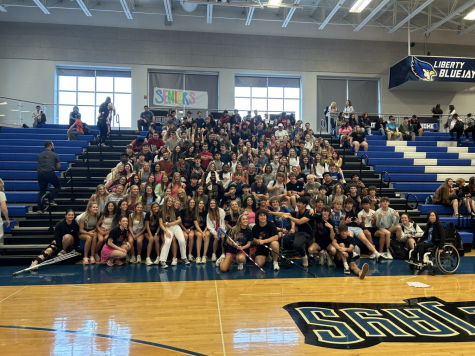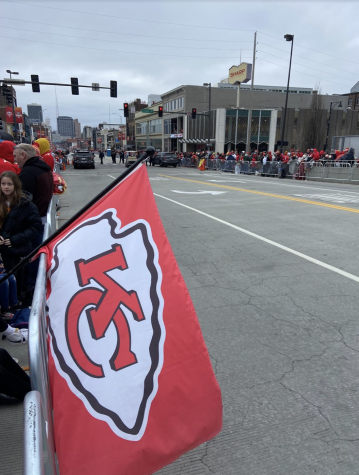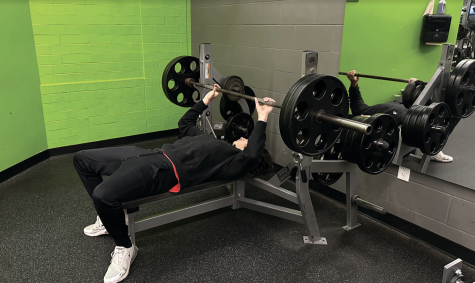It’s In-Tents
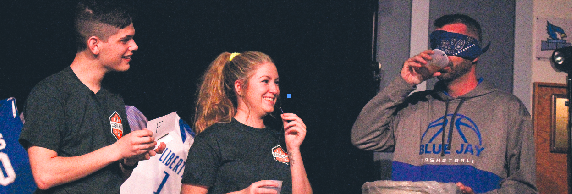
The telethon had their ducks in a row this year with the 24-hour telethon on March 11.
The theme was battling camps. Our broadcast was Camp KLHS and North’s was Camp KNET. During the day, LHS and LNHS had separate broadcasts, but after school the two programs joined together to air at LNHS.
“It was cool to work with new people in a studio I rarely go to,” junior Isaac Yates said.
Students had the opportunity to collaborate with North’s students despite the school’s differences.
“Even though our schools have a rivalry, it’s nice that we can come together to create an amazing production with our two studios,” junior Marcella Reeder said.
One of the biggest goals of the 24-hour broadcast was to make sure the segments were interesting and something the student body would want to watch. For example, one student created a segment about the band.
“The segment was about our last competition for the marching band season and taking viewers with us to see what it’s like to be a part of the band family,” Reeder said. “From the bus ride to before and after the competition, people can see first hand what goes into competition days from me recording all day.”
There were activities such as a lip dub, contests that students were able to be a part of over twitter, a dodge ball tournament, a Liberty’s Exit 1-6 versus North’s BBFP improv show, a live talent show, a blind tasting game and other games to keep the students involved.
Competitions for the dodge ball tournament were from LHS and LNHS. It started at midnight at LNHS. The requirements were $20 per team and five to eight people per team. North ended up winning the tournament.
The next hardest part to achieve was the preparation for the 24-hour broadcast. Since it is different than the daily broadcast, the students started working on the telethon starting in December and worked up until the day of. They also had a more creative range when working on the telethon because there is more time to fill.
“The daily broadcast consists of weather, daily announcements, sports and some featured packages,” broadcast teacher Amanda Derryberry said. “With the telethon, we have the ability to do pretty much whatever we want.”
There are a lot of jobs that had to be filled in order to produce the show.
“A lot more goes into the production of these broadcasts than people expect,” Yates said. “Throughout the entire day we will need someone directing, people on cameras, someone taking the graphics on and off the screen, someone on the audio board and more. Since the telethon will be going on for 24-hours, the jobs won’t be done until we go off air the next morning.”
There are more specific jobs, such as being the director.
“My job varies, but it’s mainly the director,” Reeder said. “I get the cameramen, prompter, audio, anchors and everyone else ready to go and make sure the show runs smoothly. This is the same for the telethon, but more stressful because it’s live; if you mess up you have to keep going. I love my position because leading others is one of my strengths and passions. Even though there’s a lot of stress on my shoulders and many people are relying on me, I’m always able to make the show great and having the studio atmosphere positive and fun.”
While there are many jobs, some are very tedious such as being the one to edit the clips that will be seen.
“Whenever we get the clips, we record more than what we need and we go through and try to find b-roll, which are camera shots,” sophomore Josie Wilkerson said. “Rule of thumb is don’t show a shot for more than 10 seconds because it bores people. We also want to make sure our audio levels are the same all the way through. Sometimes we have to add voice-overs. For me it takes about a week, but that’s because I’m really picky.”
Each broadcast student was required to fill 15 to 30 minutes of air space and work approximately two hours of the broadcast, as well as getting sponsorship.
“Every student is responsible for their content, so while a lot of students will be doing things live, many have made videos and vlogs, which are kind of like a blog except with videos,” Yates said. “Tons of time was also put into getting sponsorships, organizing events and creating a schedule.”
The sponsorship helps the broadcasting team raise money for their broadcast and the equipment they use. Last year they raised $9,132.95, setting a new record. However, this year they did not raise as much. One of the sponsorships this year was from Feldman Farm and Home. Two students went to Feldman’s and came back with two baby ducks and all the things needed to house the baby ducks. The baby ducks were then featured in the broadcast for over 45 minutes.
The broadcast students will be waddling into next year hoping for just as successful of a telethon.




